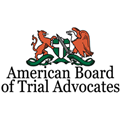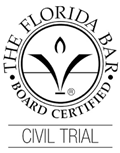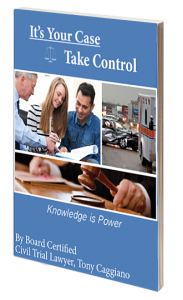Traffic Accidents FAQ
What should I do if I’m involved in a traffic accident?
Takes notes. The most important thing you can do is to document the entire situation by taking careful notes soon after your accident. This step can help make the entire claim process easier on you — and increase your chances of receiving all the compensation to which you are entitled. Having notes to remind you of all the details of what happened, and what you went through, is far easier and far more accurate than relying on your memory.
Write things down as soon as you can: Begin with what you were doing and where you were going, the people you were with, the time, and the weather. Include every detail of what you saw, heard, and felt. Be sure to add anything you remember hearing anyone — a person involved in the accident or a witness — say about the accident.
Finally, make daily notes of the effects of your injuries. You may suffer pain, discomfort, anxiety, loss of sleep, or other problems which are not as visible or serious as another injury, but for which you should demand additional compensation.
Report the accident. Many states have laws requiring that people involved in a vehicle accident report that accident in writing to the state’s department of motor vehicles. This usually only applies to accidents resulting in physical injury or a certain amount of property damage. Check with your insurance agent or your local department of motor vehicles to find out the time limits for filing this report; you often have just a few days.
If you must file a report, and the report asks for a statement about how the accident occurred, give only a very brief statement — and admit no responsibility for the accident. Similarly, if the official form asks what your injuries are, list every injury and not just the most serious or obvious. An insurance company could later have access to the report, and, if you have admitted some fault in it or failed to mention an injury, you might run into some trouble.
What determines who is responsible for a traffic accident?
Figuring out who is at fault in a traffic accident is a matter of deciding who was careless. And, for vehicle accidents, there is a set of official written rules telling people how they are supposed to drive and providing guidelines by which liability may be measured. These rules of the road are the traffic laws everyone must learn to pass the driver’s license test. Complete rules are contained in each state’s vehicle code, and they apply not only to automobiles but also to motorcycles, bicycles, and pedestrians.
Sometimes a violation of one of these traffic rules is obvious and was clearly the cause of an accident — for example, when one driver runs a stop sign and crashes into another. In other situations, whether or not there was a violation will be less obvious — a common example is a crash that occurs when drivers both merge into a single lane of traffic.
Can I be found liable if my car is rear-ended in a crash?
If someone hits you from behind, the accident is virtually always that driver’s fault, regardless of the reason you stopped. A basic rule of the road requires that a driver be able to stop safely if a vehicle stops ahead of the driver. If the driver cannot stop, he is not driving as safely as the person in front of him.
The other surefire part of rear-end accident claims is that the vehicle damage proves how the accident happened. If the other car’s front end and your car’s rear end are both damaged, there can be no doubt that you were struck from the rear.
In some situations, both you and the car behind you will be hit when a third car runs into the car behind you and pushes it into the rear of your car. In that case, it is the driver of the third car who is at fault and against whose liability insurance you would file a claim.
Is a car making a left turn always at fault in an accident?
A car making a left turn is almost always liable to a car coming straight in the other direction. Exceptions to this near-automatic liability can occur if:
- the car going straight was going too fast (this is usually difficult to prove) the car going straight went through a red light, or
- the left-turn car began its turn when it was safe but something unexpected happened which made it have to slow down or stop its turn.
Whatever the contributing factors, the law says the car making the left turn must wait until it can safely complete the turn before moving in front of oncoming traffic. Also, the location of the damage on the cars sometimes makes it difficult for the other driver to argue that the accident happened in some way other than during a left turn. So, if you have had an accident in which you ran into someone who was making a left turn in front of you, almost all other considerations of fault go out the window, and the other driver is nearly always liable.







